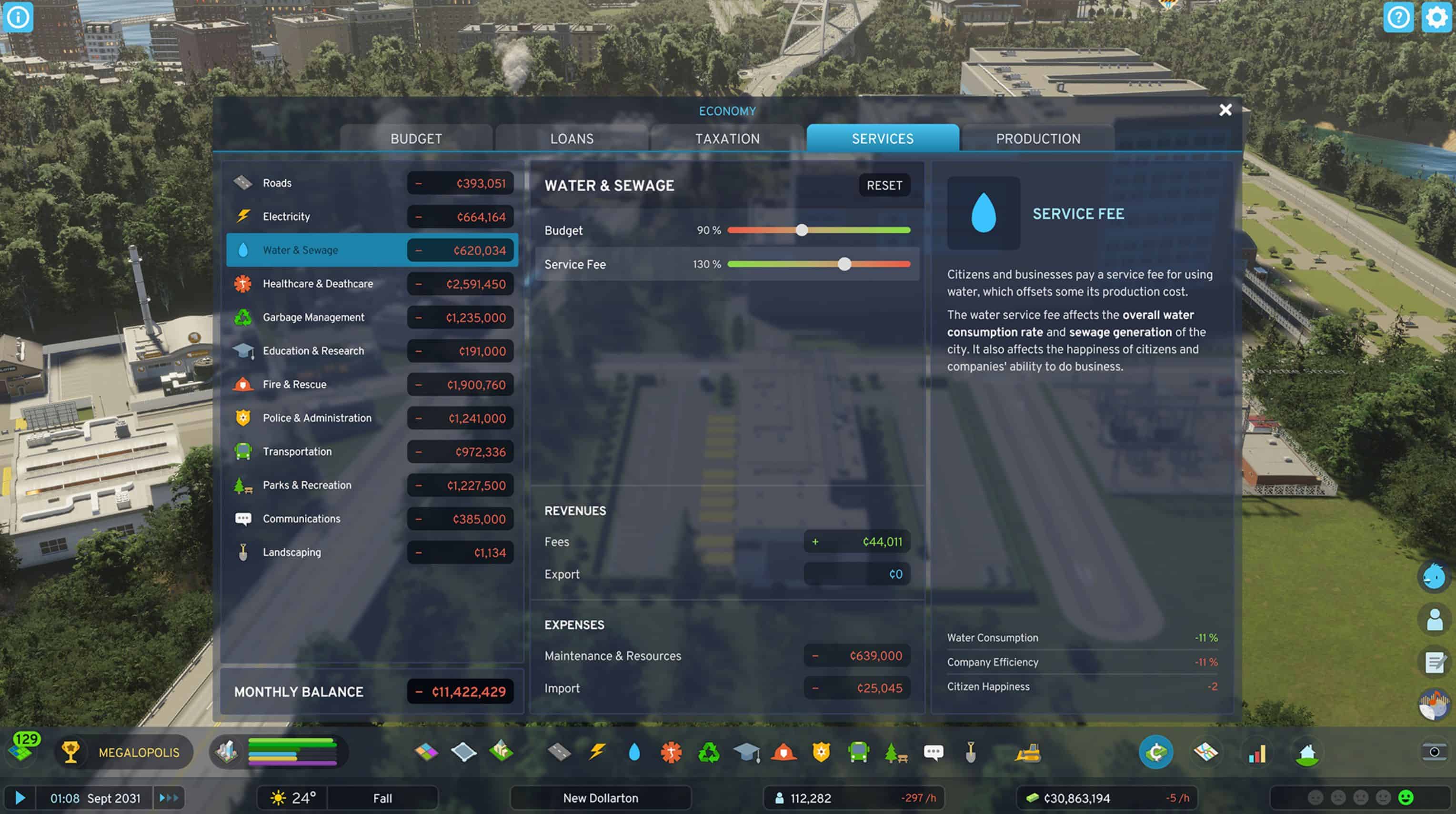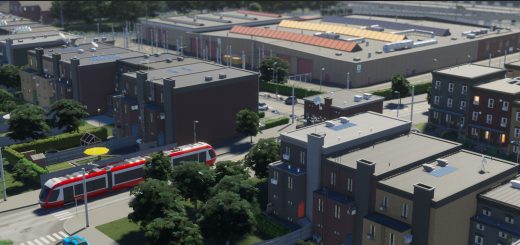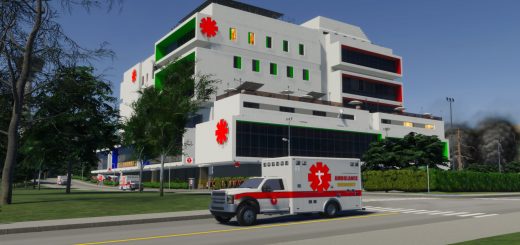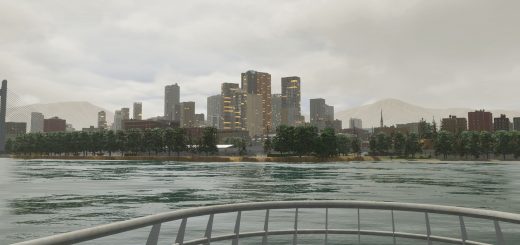Cities Skylines 2: Service Fees
Within the Economy panel, there’s a specific section tailored for managing city service budgets. The budget control slider uniformly impacts all buildings under a particular service. Its primary role is to modulate upkeep costs and the efficiency of these buildings. The listed expenses encompass maintenance (commonly referred to as building upkeep), and for certain services, the costs of resources like fuel for power plants. This panel also delineates information about service imports, exports, and any fees garnered from specific city services. Indeed, certain services levy charges on citizens, such as Roads, Electricity, Water & Sewage, Healthcare, Garbage Management, Education, and Transportation.
Both individuals and businesses bear the brunt of electricity and water charges, which can be fine-tuned within the Economy panel. By slashing these charges, you can boost the morale of the citizenry and enhance business profitability, albeit at the cost of escalating water and electricity consumption. On the flip side, hiking up these charges may diminish happiness levels and profitability, but can act as a curb on water and electricity consumption. By manipulating these charges, either in isolation or coupled with District policies, the city can nudge its residents towards more sustainable electricity usage patterns, subsequently dialing down citywide demand.
When citizens seek medical attention at health facilities, they’re charged a healthcare fee. In the realm of waste management, fees come into play when garbage trucks make their rounds, collecting refuse from residences and businesses. On the educational front, every tier of schooling institutes its own fee structure; Elementary Schools being the least burdensome on the pocket, and Universities, the priciest.
The Roads service offers the flexibility to enforce parking charges for specific Districts as well as the myriad parking spaces and parking buildings under its purview. In a similar vein, the ticket pricing for each passenger transit line is customizable. This flexibility allows city planners to sway public transit choices, as residents weigh in on costs during their commute planning.






